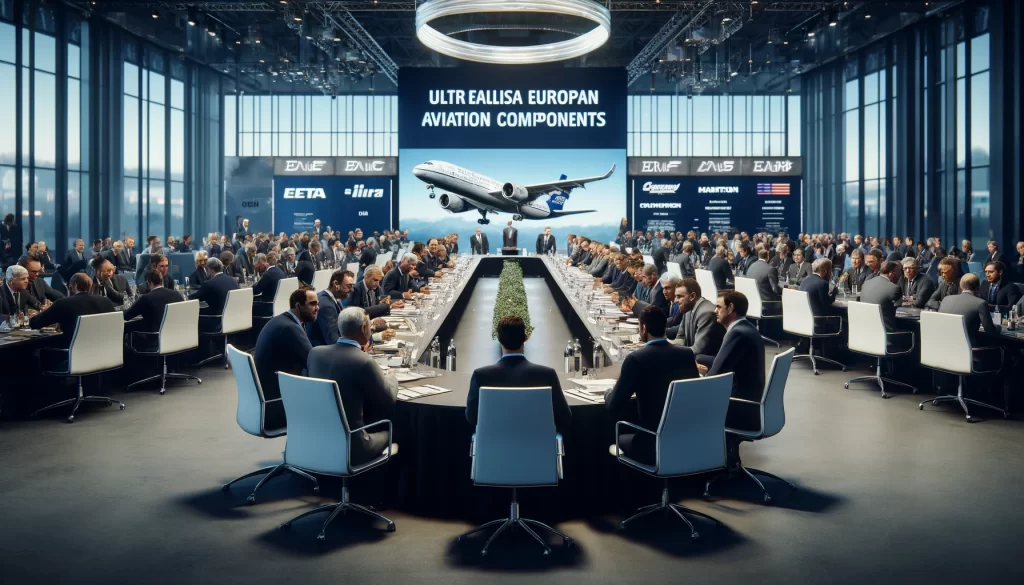Explore the dynamic market of top aircraft parts stores in Europe with our in-depth analysis. Understand key trends, evaluate top suppliers, and uncover industry challenges and future opportunities in aviation components trading. Perfect for professionals seeking detailed insights into Europe’s aviation parts landscape.
Introduction
In the complex and demanding field of aviation, the reliability of aircraft components is not just a matter of efficiency but of safety and regulatory compliance. Europe, with its rich history in aviation, hosts some of the world’s leading suppliers of airplane parts. This article delves deep into the European aircraft parts landscape, offering unique insights into the market dynamics, key players, and the nuanced challenges they face. We explore aspects often overlooked yet crucial for those directly involved in aviation maintenance and parts procurement.
Understanding the European Aviation Parts Market

Overview of the Market
The European market for aircraft spare parts is a microcosm of global aviation dynamics, characterized by a robust demand driven by both commercial and private sectors. Key players range from large-scale distributors to specialized local suppliers, each catering to a niche segment of the vast aviation industry. Regions such as France, Germany, and the UK serve as hubs due to their strong aerospace manufacturing bases and extensive network of suppliers.
Market Trends
Currently, the European aircraft parts market is undergoing significant transformation driven by technological advancements and regulatory changes. The increasing adoption of digital platforms for sales and supply chain management is making it easier and faster to source and distribute parts across the globe. Sustainability is another major trend, with suppliers now prioritizing eco-friendly parts and recycling programs to align with global environmental targets. Moreover, changes in EU aviation regulations continually reshape supplier operations, emphasizing the need for agile and compliant business practices.
FAQs
- What factors drive the demand for aircraft spare parts in Europe?
- Demand is primarily driven by the need for regular maintenance, updates to regulatory standards, and fleet expansions or updates by airlines and private operators. Economic growth and increased air travel also significantly contribute to this demand.
- How does digitalization affect the aircraft parts market in Europe?
- Digitalization streamlines the supply chain, enhances inventory management, and improves customer service through online platforms that offer real-time tracking, automated procurement processes, and more efficient logistics.
- Are there specific regions in Europe that dominate the aircraft parts supply market?
- Yes, regions like France, Germany, and the UK are key hubs due to their extensive manufacturing facilities, technological prowess, and centralized location in Europe’s transport network.
Key Factors in Choosing a Top Aircraft Parts Supplier

Quality and Certification
When selecting a supplier for aircraft parts, certifications such as ISO 9001, EASA Part 21, and FAA approvals stand as benchmarks of quality and reliability. These certifications ensure that suppliers meet stringent industry standards for manufacturing, testing, and distribution, providing assurance that the parts are safe and reliable for use in aviation operations.
Inventory and Supply Chain Management
The ability to manage inventory effectively and maintain a responsive supply chain is critical, especially when unexpected groundings or maintenance issues arise. Top suppliers in Europe distinguish themselves by utilizing sophisticated inventory management systems and logistics solutions that ensure fast and accurate delivery of parts, minimizing downtime for airlines and aircraft operators.
FAQs
- Why are certifications important when choosing an aircraft parts supplier?
- Certifications ensure that the supplier meets international safety and quality standards, which are crucial for maintaining the integrity and safety of aviation operations.
- How do top suppliers manage their inventories to ensure part availability?
- Top suppliers utilize advanced inventory management systems that include software capable of predictive analytics to forecast demand accurately and RFID technology for real-time inventory tracking.
- What kind of technical support should a top aircraft parts supplier provide?
- Suppliers should offer comprehensive technical support including installation guidance, troubleshooting during part failures, and regular training sessions for clients on new parts and technologies.
Technical Support and Customer Service
Beyond the sale of parts, leading suppliers provide exceptional technical support and customer service. This includes offering expert advice on part compatibility, installation guidance, and after-sales support. Such services are indispensable for building long-term relationships with clients and are a hallmark of top aircraft parts stores.
Spotlight on Top Airplane Parts Stores in Europe

Leading Suppliers and Their Unique Selling Points
Among Europe’s premier suppliers, companies like Lufthansa Technik, Airbus, and BAE Systems stand out not only for their comprehensive product ranges but also for their innovative approaches to supply chain management and customer engagement. These companies leverage cutting-edge technologies, including AI and predictive analytics, to forecast demand and optimize stock levels.
Innovative Practices in the Industry
Innovation is at the heart of the top European airplane parts stores. For example, several suppliers are now employing blockchain technology to track the lifecycle of parts, enhancing transparency and trust in the authenticity and legality of supplied components. Additionally, advancements in 3D printing are revolutionizing the availability of rare or out-of-production parts, facilitating quicker turnaround times and reducing costs.
Challenges Facing the Aircraft Parts Industry in Europe

Regulatory and Compliance Issues
The regulatory landscape in Europe is complex and often poses a challenge to suppliers needing to navigate a maze of local and international standards. Compliance with these regulations is not optional but a critical requirement that can significantly impact the operational capabilities of suppliers.
Economic and Political Factors
Economic uncertainties, including those brought about by events like Brexit, have profound impacts on trade tariffs, supply chain logistics, and currency fluctuations. These factors inevitably affect the pricing and availability of aircraft parts in the market, requiring suppliers to be flexible and resilient in their business strategies.
Future of Aviation Parts Stores in Europe

Technological Advancements
Looking ahead, technological advancements are set to further transform the aircraft parts industry. The integration of IoT devices in parts inventory and health monitoring systems promises enhanced predictive maintenance capabilities, potentially reducing the frequency and severity of aircraft downtimes.
Market Projections and Opportunities
As the industry evolves, new opportunities are emerging for both established players and new entrants. The growing demand for more environmentally sustainable aviation solutions is driving innovation in parts recycling and reuse, opening up new market niches focused on green aviation solutions.
FAQs
- What technological innovations are likely to impact the aircraft parts industry in the near future?
- Technologies like blockchain for secure parts tracking, 3D printing for manufacturing parts on-demand, and IoT devices for monitoring part conditions are poised to have significant impacts.
- How will the aircraft parts industry adapt to increasing environmental concerns?
- The industry is moving towards more sustainable practices, including using recycled materials for part manufacturing, optimizing supply chains to reduce carbon footprints, and innovating with eco-friendly technologies.
- What are the market opportunities for new entrants in the European aircraft parts industry?
- New entrants can capitalize on niches such as supplying parts for vintage aircraft, focusing on environmentally sustainable solutions, or specializing in aftermarket services for out-of-production aircraft models.

Conclusion
The landscape of aircraft parts stores in Europe is rich and varied, presenting numerous opportunities and challenges. For industry professionals, understanding these dynamics is key to making informed decisions that ensure the safety, efficiency, and compliance of aviation operations. As we look to the future, staying abreast of technological and regulatory changes will be crucial for anyone involved in the aviation parts industry in Europe. For further insights and a comprehensive list of top suppliers, exploring specialized industry reports and supplier directories is highly recommended.
